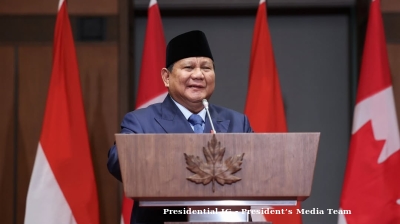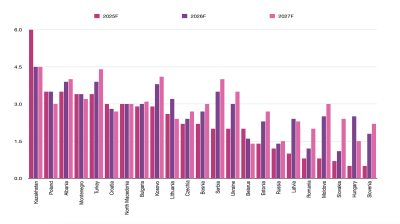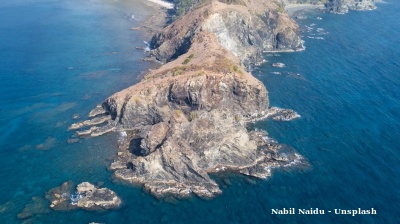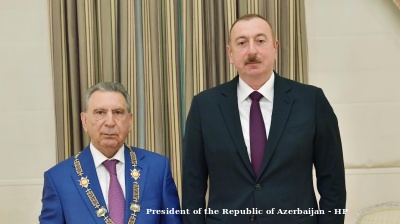The idea for the 1,800km Turkmenistan-Afghanistan-Pakistan-India (TAPI) natural gas pipeline project has existed since Turkmenistan became independent three decades ago. And now it finally appears to have made a start. Turkmenistan just built the first 14km into Afghan territory and plans to supply the city of Herat with copious amounts of gas by the end of next year.
Bottled up in Central Asia, for many years, the only export routes out of the region were through Soviet era pipelines that run through Russia. The large and lucrative markets of South Asia were an enticing alternative market, and have only become more attractive in the intervening years as the Global South takes off, but the exit has been corked up by instability in war-torn Afghanistan.
What participants have dubbed “phase zero” of the plan is now well underway. It’s still early days, but Turkmenistan’s leader of the nation and former president Gurbanguly Berdimuhamedov, now the chairman of Turkmenistan’s Halk Maslahaty (People’s Council), was on the Turkmen-Afghan border on October 20 to meet with Afghanistan’s Deputy Prime Minister for Economic Affairs, Mullah Abdul Ghani Baradar. Together they cut the tape, inaugurating the first section of TAPI on Afghan soil.
Turkmenistan has already built a 500km pipeline from Serhetabat to the Afghan border, a project launched in 2018 by the presidents of all four of the participating countries.
This week Berdimuhamedov, who is known locally as “Arkadag”, which means “Protector,” travelled to Afghanistan for the second time ever to inaugurate the Serhetabat-Herat section of the pipeline which is to be called “Arkadagyn Ak Yoly,” or “Arkadag’s White Road.”
The ceremony comes in the same week as Ashgabat hosted the 30th annual Oil and Gas Conference and Exhibition (OGT2025) that drew energy specialists from around the world, as interest in Turkmenistan’s energy is rising.
At the meeting, Muhammetmyrat Amanov, CEO and Chairman of the TAPI Pipeline Company, told bne IntelliNews that the pipes to complete construction have already been procured and are now being delivered to the site, where heavy equipment has already arrived and work is underway.
“In just the last twelve months, we have made significant progress, and we have started to build,” Amanov said. “The legal framework from the Afghan side to support the investment is signed and the surveys and right of way agreements are finished, as is the procurement of the pipes. All the leading processes have been finished and ordered and on their way to the site.”
A lot more still needs to be settled. Talks with the Taliban for the off take agreements for the gas distribution in Herat are still under discussion and the decisions on the further expansion to the Pakistan border remain in the future. But Amanov said that Turkmengaz expects to load the pipe with gas at the end of 2026 or early in 2027.
Game-changer
The TAPI pipeline is a potential game-changer, connecting Turkmenistan’s giant gas fields to the burgeoning markets of Pakistan and India.
TAPI will draw gas from the new Galkynysh mega-deposit that is now under development. The republic already exports 30bcm of gas a year to China via the Central Asia–China pipeline system, but Galkynysh will double production and supply 30bcm to TAPI doubling exports should it become fully operational.
This month, President Serdar Berdimuhamedov attended a ceremony to begin drilling at three new production wells in the giant field, which holds an estimated 27.4 trillion cubic metres of natural gas. Located in the Mary province near the border with Afghanistan, production began in 2013 by state-owned company Türkmengaz, but full-scale production at the field is not expected to take off until 2030.
Turkmenistan has the fourth-largest gas reserves in the world, currently an estimated 17 trillion cubic meters, not including Galkynysh. Eventually the TAPI pipeline is expected to carry 33bcm of gas per year – 14bcm each for India and Pakistan and 5bcm for Afghanistan – effectively doubling Turkmenistan’s gas exports.
Amanov highlighted that the pipeline will be a platform for wide-ranging economic development, extending to power lines, rail links, and fibre optic connections, amongst other things.
Stars aligning
The pipeline has received a new impetus as a number of factors align to bolster interest in getting the project done. Central Asia is flourishing, lifted by the economic spill over from the Russia-Ukraine conflict and the shifting trade and energy markets driven by the East-West showdown. As bne IntelliNews previously reported, Central Asia has been the big winner from the war in Ukraine, which has driven a boom in trade and FDI investment into the region.
Fast growth has focused all five governments on the need to secure more energy to drive their mushrooming economies and the change of leadership in Uzbekistan in 2016 has also brought a new era of coordinated cooperation amongst the five 'Stans that have clubbed together to better deal with the changing geopolitical pressures from the great powers in their region. Increasingly, the five presidents of Central Asia are travelling as a pack in the C5 format and as bne IntelliNews reported, the Global South in general is working to build new global emerging market institutions (GEMIs) to better coordinate their economies independently from the Western institutions – a cooperation that extends to energy.
The situation in Afghanistan is changing too. Since the US military exit from the country in August 2020 during the Biden administration its neighbours to the north have been working hard to normalise relations with the Taliban government. Various projects were implemented to normalise trade, including power lines from Uzbekistan and truck routes with Pakistan. With the economy in tatters after 20 years of war, economic necessity has made the Taliban government more open to cooperation. Russia suspended its official “terrorist” designation for the Taliban in April. Kazakhstan and Kyrgyzstan already removed it from their terrorist lists in 2023.
Pakistan-India section
From Herat, the pipeline’s route runs southeast to Kandahar, then east to Pakistan and India, however, it is possible that the pipeline will never progress beyond Afghanistan’s fourth-largest city with a population of 750,000 people.
The Herat section of the pipeline is in many ways a gesture of good faith by the four participating countries. Many of the detailed agreements needed to supply gas to the Afghan market are still being negotiated and the larger agreements that would allow the pipeline to cross Pakistan and enter the Indian market are also not signed.
Turkmenistan hopes that, by going ahead with the construction of the first section to Herat, these problems can be overcome one by one and the benefits of supplying Herat with copious amounts of energy, Afghanistan’s biggest province, will encourage the Taliban to support further expansion of the project.
Potentially a more serious problem will be securing agreements with Pakistan and India, which briefly went to war with each other earlier this year.
Pakistan has long-standing and close relations with the Taliban and is keen to boost its energy security. More recently, New Delhi has also reached out to the Taliban.
India hosted the Taliban’s Foreign Minister Amir Khan Muttaqi in October marking a pivotal moment in New Delhi’s pragmatic realignment of its Afghan policy, reflecting a calculated effort to secure national interests amid shifting regional dynamics. But the meeting highlighted the difficult prospect of securing a pipeline deal in the face of prickly relations between the two countries as the meeting drew a sharp rebuke from Islamabad.
Like the Turkmens, India is wooing the Taliban and hoping to deepen economic and diplomatic ties. During Muttaqi’s visit, New Delhi announced that its technical mission would be upgraded to a fully operational embassy, unveiled six new development projects and expanded trade ties, but without extending formal diplomatic recognition of the Taliban government. In return, the Afghan foreign minister encouraged Indian firms to invest in mining and reconstruction in Afghanistan.
US hurdles
Turkmenistan is lobbying the White House for support. Currently, Ashgabat is funding the phase zero stage out of its own pocket, with some help from the Asian Development Bank (ADB), but once the work starts to extend beyond Herat, it will need funding and technology – both of which the US can supply.
One of the problems that the US contractors and investors face is that the US government does not recognise the Taliban as the legitimate government and has imposed sanctions. US companies will need to get licences from the Department of the US Treasury's Office of Foreign Assets Control (OFAC) to work with Afghanistan. The phase zero work has been allowed as it falls under the General licence 20, a designation of “humanitarian assistance”, which exempts it from sanctions, but the large-scale project is clearly commercial as it will earn Turkmenistan billions of dollars a year.
Samantha Carl-Yoder, Policy Director and Co-Lead at Brownstein Hyatt Farber Schreck, who is representing Turkmenistan, says that the Trump administration is keen to get business for US companies anywhere around the word and is likely to compromise, but adds that will probably mean a deal for access to Afghan minerals.
“The way the West does business now is based on economics,” says Carl-Yoder. “The Trump administration is looking for ways to benefit US businesses. Trump is likely to say that he will support the pipeline but “I want to talk about your minerals.” The pipeline will give him some leverage in talks with the Taliban as he is all about minerals these days.”
As bne IntelliNews has reported, it is becoming increasingly clear that Trump is running a minerals diplomacy foreign policy, where any negotiations he brokers, such as the string of recent peace deals, all come with an access to minerals deal in tow.
Trump is due to host the C5 leaders in Washington in November, which will present a perfect opportunity for President Serdar Berdimukhamedov to lobby him directly for US support, while the US continues squeezing India and China over oil and gas imports from Russia.
Gas competition
The Afghan project is important for Turkmenistan as competition in the gas business is growing. The US is following a policy of “dominance” in the LNG business and planning to ramp up its output in the next two years. Likewise, Qatar has several large projects due to come online at the same time. And Russia is in talks with China to build the Power of Siberia 2 (POS2) pipeline that will cut into Turkmenistan’s ability to export.
Moscow and Beijing signed an agreement on POS2 in September, but will almost certainly kill off a mooted “Line D” pipeline from Turkmenistan to China, to add to the existing A, B, and C lines of the Central Asia-China pipeline network.
Line D would have carried 30bcm of Turkmen gas to China, but with a planned capacity of 50bcm of Russian gas to China via POS2, that Turkmen gas would be no longer needed.
The US focus on boosting LNG exports is also potentially a competitor, but TAPI chairman Amanov said that, as Turkmen gas will primarily go to India and Pakistan, and that piped gas is far cheaper than LNG, the two projects are probably mutually complementary rather than rivals.
Carl-Yoder argued that although there is a lot of new LNG capacity coming online, the US still lacks the logistics to deliver all this to all markets around the world and will lack this capacity for several decades to come. In the meantime, pipeline projects like TAPI will play an important role in the interim. Both Pakistan and India are very price sensitive and piped gas will always be cheaper than LNG.
“We have to face some facts,” Andrea Stegher, President of the International Gas Union, told bne IntelliNews on the sidelines of the meeting. “The Paris Agreement assumed that demand for energy would fall by 2050 but it is rising for a number of reasons, including the AI revolution. We need to go back to basics and start thinking about not prevention but mitigation. As the best low emissions option to provide that energy, gas is going to play a key role in this process... World wide gas demand is set to increase by 1.9% but supply by only 1.6% - we already have an energy squeeze.”
Tim Davies, Business Development Manager at Gaffney Cline & Associates, points out that India consumed 74bcm of gas in 2024, but that will rise to 150bcm by 2050 and the share of gas in the mix is expected to increase from 6% now to 15% as soon as 2030. At the same time India’s own domestic production is expected to peak in 2027 and it will be forced to increase imports as a result.
There are several other options for delivering Turkmen gas to market. A plan to swap Iranian gas with Iraq was discussed, but sanctions on Iran quickly made that a non-starter.
The Trans-Caspian Gas Pipeline project to transport 30bcm of Turkmen gas to Europe is also decades old, but has failed to get off the ground. So far a 773km East-West pipeline has been built inside Turkmenistan, completed in 2015, that connects gas fields in the interior to Turkmenistan’s Caspian coast, but no further plans have been announced.
Features

Looking back: Prabowo’s first year of populism, growth, and the pursuit of sovereignty
His administration, which began with a promise of pragmatic reform and continuity, has in recent months leaned heavily on populist and interventionist economic policies.

Emerging Europe’s growth holds up but risks loom, says wiiw
Fiscal fragility, weakening industrial demand from Germany, and the prolonged fallout from Russia’s war in Ukraine threaten to undermine growth momentum in parts of the region.

The man who sank Iran's Ayandeh Bank
Ali Ansari built an empire from steel pipes to Iran's largest shopping centre before his bank collapsed with $503mn in losses, operating what regulators described as a Ponzi scheme that poisoned Iran's banking sector.

Andaman gas find signals fresh momentum in India’s deepwater exploration
India’s latest gas discovery in the under-explored Andaman-Nicobar Basin could become a turning point for the country’s domestic upstream production and energy security



